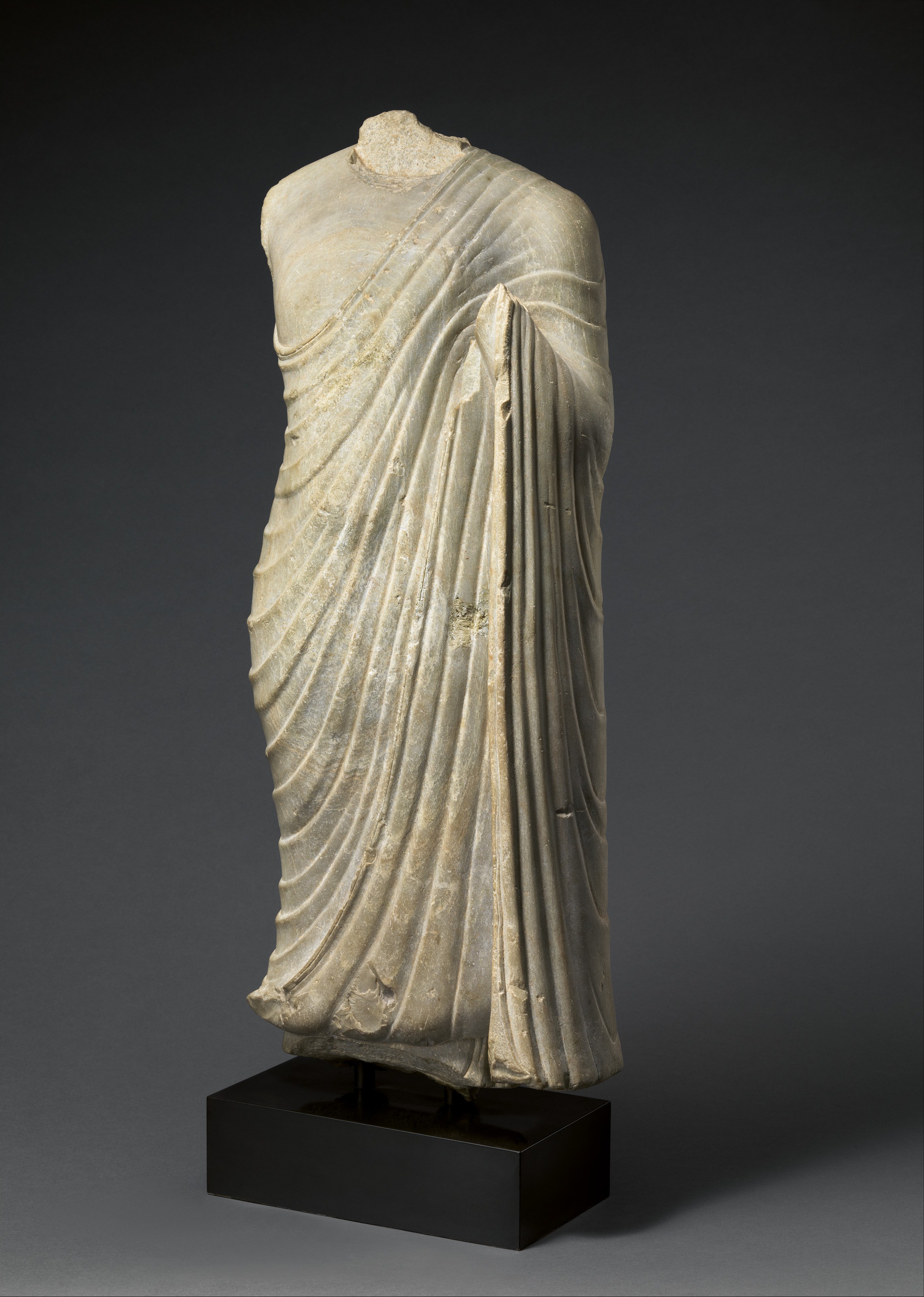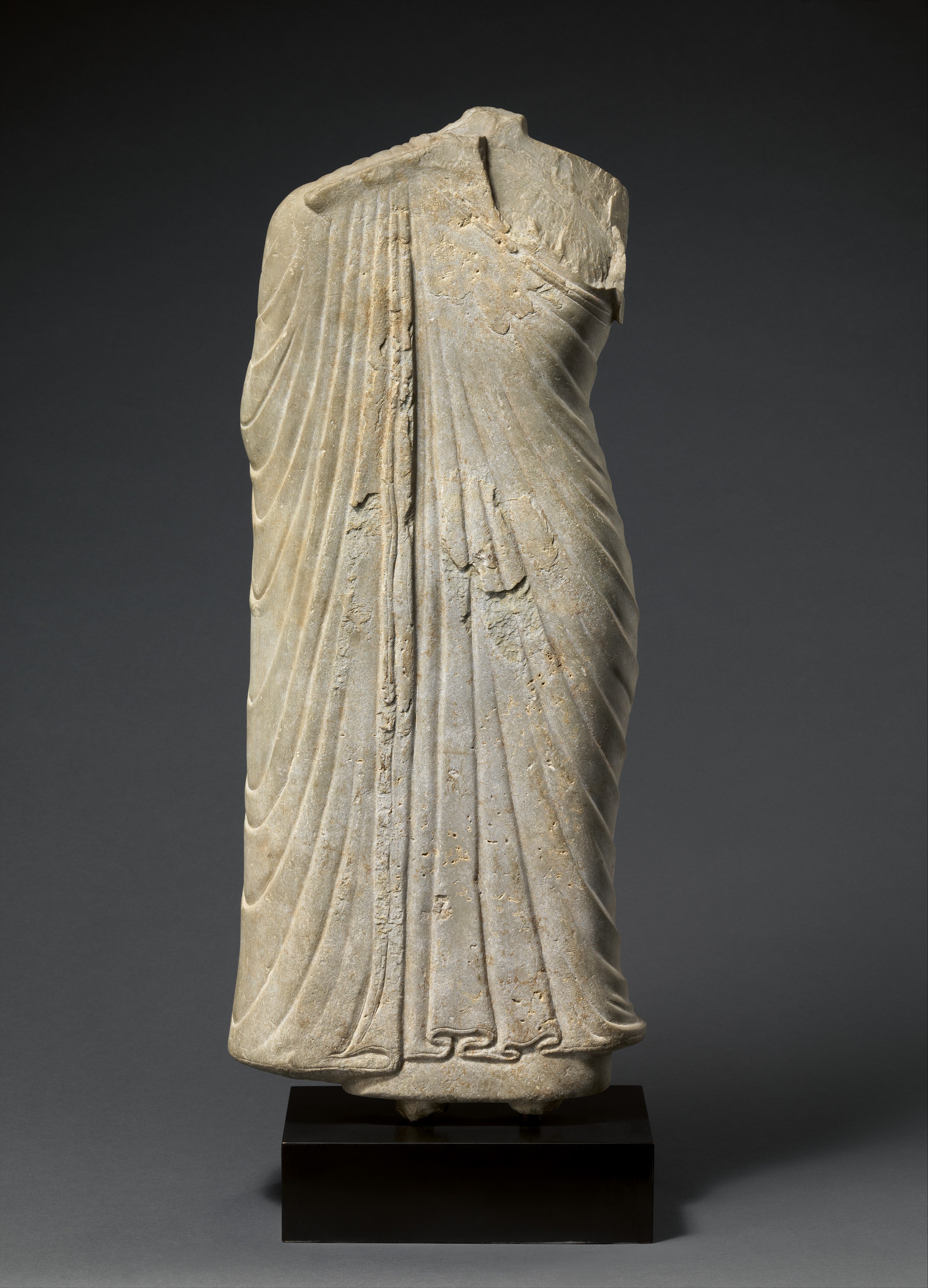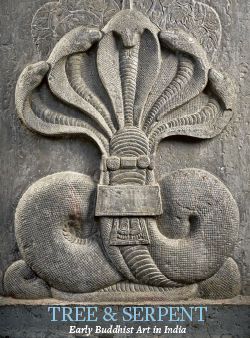Buddha
Figurative representations of the Buddha emerged in southern India as the preoccupation with serial narration in stupa panels shifted to the veneration of the icon. This coalesced in the third century CE under the energetic patronage of the Ikshvaku dynasty, as witnessed by these two freestanding sculptures. Both use the deeply fluted garment to dramatize the figure’s gesture while precisely mirroring how the robe envelopes the body, drawn taut against the leg and hip and across the torso to the opposite shoulder before cascading from the raised arm to the ankles. Although still positioned frontally, the icons’ fully sculpted backs confirm that they were intended to be viewed in the round. Most of these figures have been discovered in the semicircular brick shrines for which they were made, placed in the apse to allow circumambulation by devotees.
This image cannot be enlarged, viewed at full screen, or downloaded.
This artwork is meant to be viewed from right to left. Scroll left to view more.






